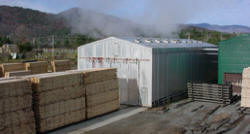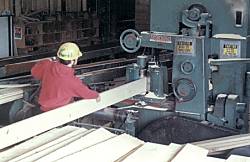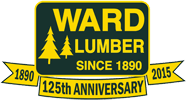Mill Facility |
| Home | Wholesale Wood Products | Mill Facility | Forestry & Recreational Leasing | Calculate the Pine you need | Contact us |
|
Metal Detector (Precautionary): Before a log enters our sawmill, it must pass through the Rens Metal Detector. The detector can scan up to 36" diameter logs. The scaler can scale logs from up on a platform where the logs are more visible. This makes it much easier to grade the log. This state of the art unit is instrumental in assuring that only the best quality logs make it into our mills. |

|
|
Sawmill: The logs that have cleared through the metal detector are loaded into the debarker. Bark is removed from logs up to 36". It also removes excess mud, which would otherwise be detrimental to the saw. The bark and sawdust are sold or used for fuel in our boiler. The band head rig receives the logs from the debarker. The headrig runs 40' long 14" wide saws on its pair of 6' wheels. The lumber then passes through an edger which rips boards to width. Thicker material passes through to the linebar resaw which breaks it down further. All lumber passes through a trimmer which cuts the boards to length. From there, they proceed to the green chain and are graded. The lumber is sorted, stacked and kiln dried. |

|
|
Kilns: Our state of the art kilns have a combined capacity of 210,000. Our goal is to dry pine to a moisture content of 10 to 12 percent. A bi-product from the sawmill, sawdust is used to create steam to heat the kilns. Depending on moisture content, it can take from 1 to 12 days to dry approximately 80,000 board feet of lumber. |

|
|
Planing Mill: After boards have been kiln dried for the appropriate length of time, they go into the Planer Mill for finishing. Two 8" x 14" planers feed lumber through grading lines with double end trimmers. The lumber is graded again and packaged for deliveries. Our remanufacture operation is capable of producing clapboard sidings in many widths using our resaw. Ward lumber bags and sells approx 2500 shavings bags per week. |

|
